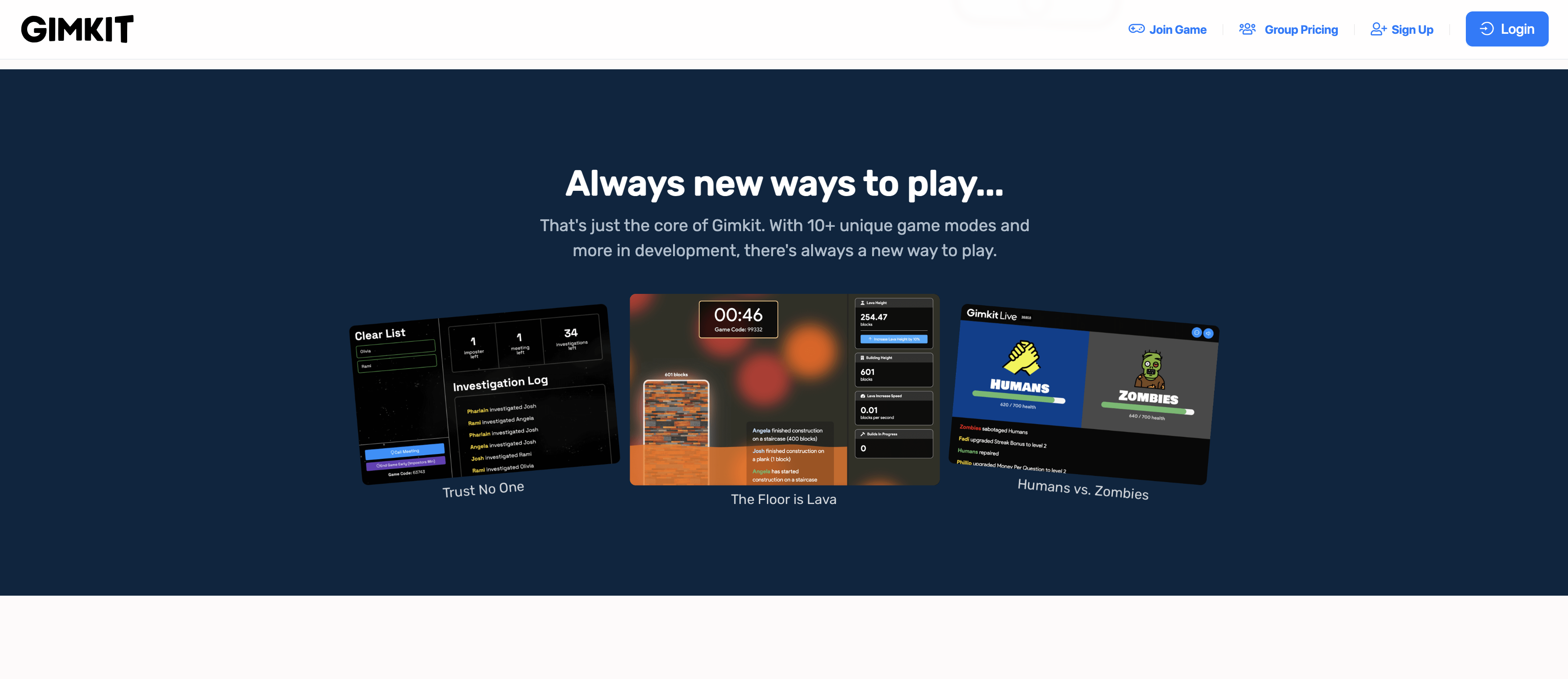Teachers are driven by a desire to help students succeed. Digital tools like Gimkit and Kahoot! help educators empower their students to excel. Both platforms make learning interactive, but they approach this goal in different ways.
Gimkit vs Kahoot!
Gimkit excels in allowing students to take the reins. This platform empowers students to create and share their own quiz-style games, fostering a sense of ownership and creativity in the learning process. Its real-time feedback system offers immediate responses to students’ answers, which is crucial for on-the-spot learning.

On the other hand, Kahoot! is a widely recognized name in interactive, game-based learning. Known for its user-friendly quiz creation and engaging templates, Kahoot! makes it easy for teachers to design captivating learning experiences. Beyond just quizzes, Kahoot! enables educators to set specific learning objectives and track student progress, providing a comprehensive educational tool.

It’s also worth noting the role of Jotform’s test generator software in this landscape. While not the primary focus of our comparison, Jotform offers valuable tools for educators in quiz and test creation, complementing platforms like Gimkit and Kahoot! — but we’ll discuss that in more detail in a bit.
Unboxing the features of Gimkit vs Kahoot!
Comparing the unique features of each platform can help you choose the one that best aligns with your educational objectives and classroom dynamics. Let’s explore the unique functionalities, quiz options, data-tracking capabilities, and pricing structures of both.
- Messaging capabilities: Both platforms offer communication tools, but their approaches differ. Gimkit focuses more on the interaction within quiz gameplay, whereas Kahoot! offers broader communication options, including notifications and alerts.
- Ease of use: Kahoot! has a straightforward, intuitive interface, making it a hit among educators who prefer simplicity. Gimkit, while not overly complex, requires a bit more time to learn, especially for students creating quizzes.
- Integration with other tools: Kahoot! has the edge in terms of integrations. It seamlessly connects with various educational tools and platforms.
- Quiz features and game variety:
- Gimkit offers a unique twist with its student-generated quizzes, which can produce a more diverse range of game types and topics. This student-centered approach can also result in more personalized learning experiences.
- Kahoot! has an extensive template library and customizable quizzes, so it excels in providing a variety of ready-to-use educational games for different subjects and learning styles.
- Data tracking: Both platforms provide robust data-tracking capabilities, but Kahoot! delivers an especially detailed system. It offers insights into student progress and comprehension, which can be invaluable for planning and customizing future lessons.
- Pricing:
- Gimkit has a free plan with basic features. Its paid tiers are $1,000 per year for the entire school or $650 per year for a department with up to 20 teachers.
- Kahoot! has a free basic plan and paid tiers like Kahoot!+ Starter for $10 per teacher per month, Kahoot!+ Presenter for $24 per teacher per month, and Kahoot!+ Pro for $49 per teacher per month. It also has different pricing structures for teams and schools, which start at $29 per teacher per month and are discounted according to the number of teachers using the platform.
Aligning your educational tools with your needs
Whether you choose Gimkit or Kahoot! depends on your specific needs and preferences — and those of your students. If the goal is to encourage student participation in quiz creation and to foster a more collaborative learning environment, Gimkit might be the better choice. However, if the focus is on ease of use, broad integration with other tools, and detailed tracking of student progress, Kahoot! emerges as a strong contender.
Ultimately, the choice will come down to educational goals, the learning environment, and the specific needs of the classroom. But what if you need a more versatile option?
Leveraging Jotform for a flexible classroom experience
For educators seeking flexibility in their classroom tools, Jotform is a compelling alternative. Its user-friendly, drag-and-drop interface empowers teachers to create customized educational content, from simple quizzes to complex, branching surveys that respond dynamically to student input.
Jotform’s ability to collect detailed data gives educators insight into student performance and progress —helping teachers identify learning gaps and refine teaching methods. Plus, teachers can take advantage of Jotform’s 50 percent discount for educators. Why not try Jotform for free and experience its capabilities firsthand?
Photo by Van Tay Media on Unsplash






































































































Send Comment: